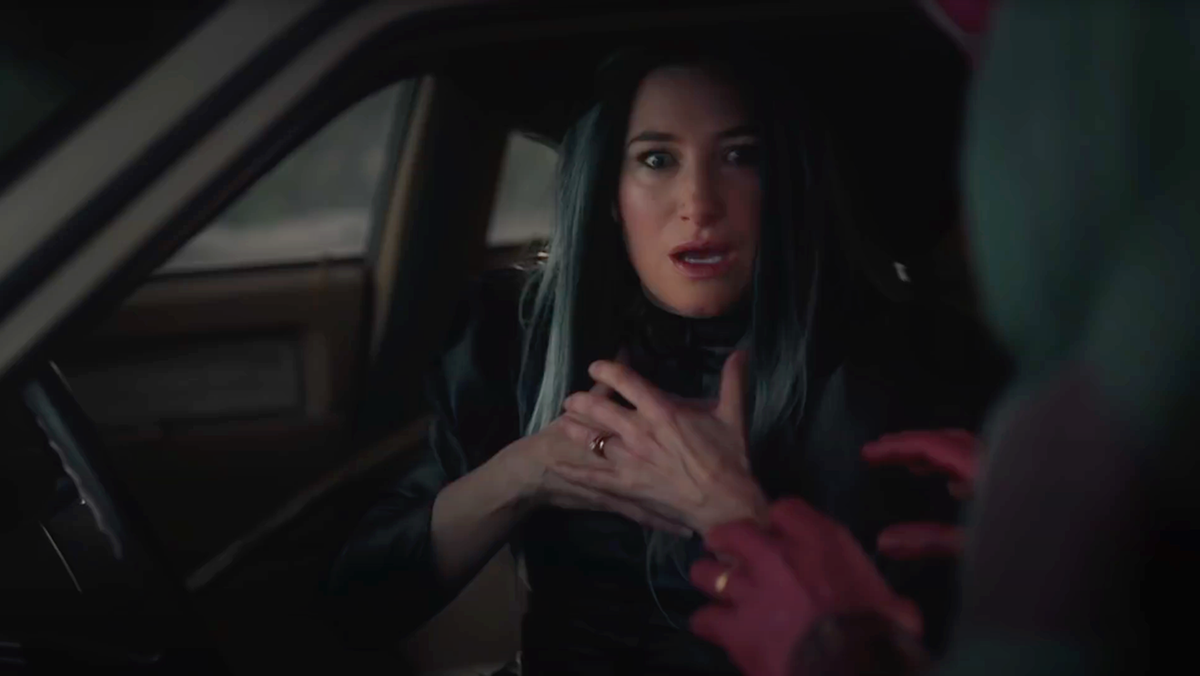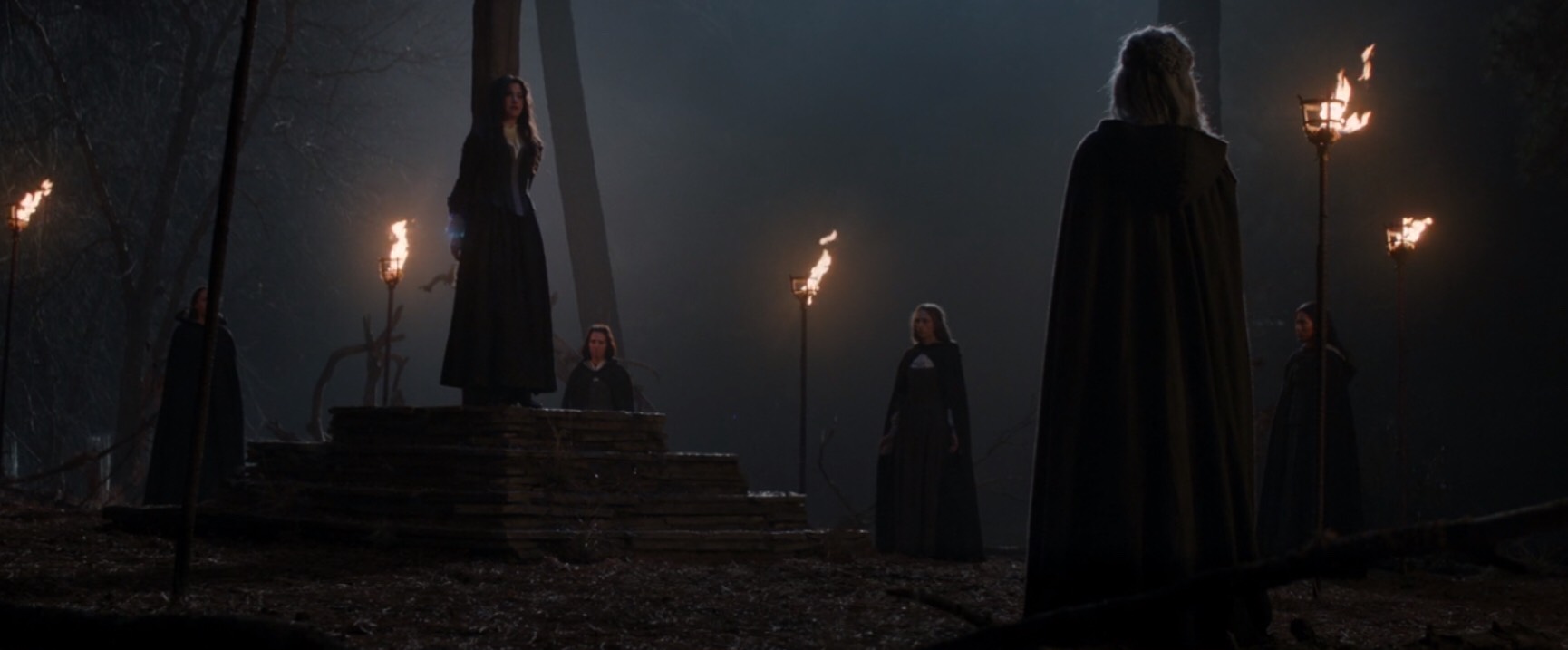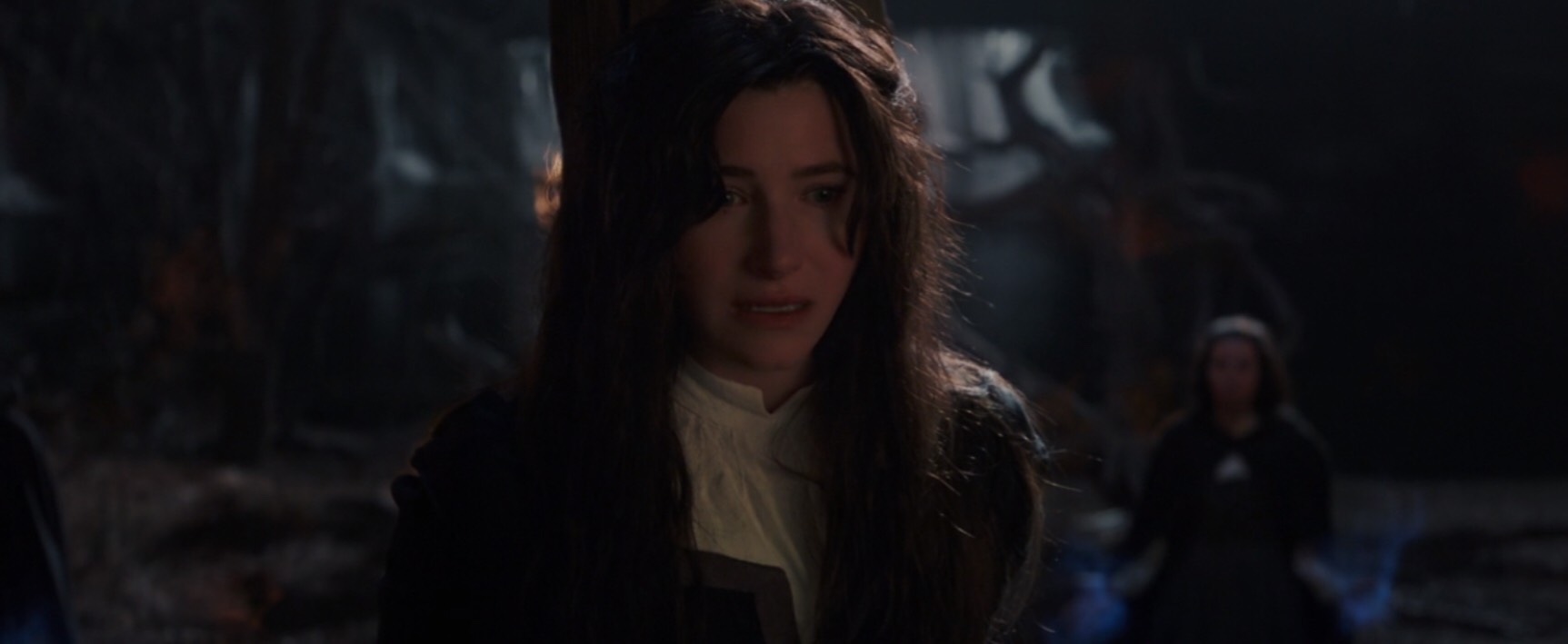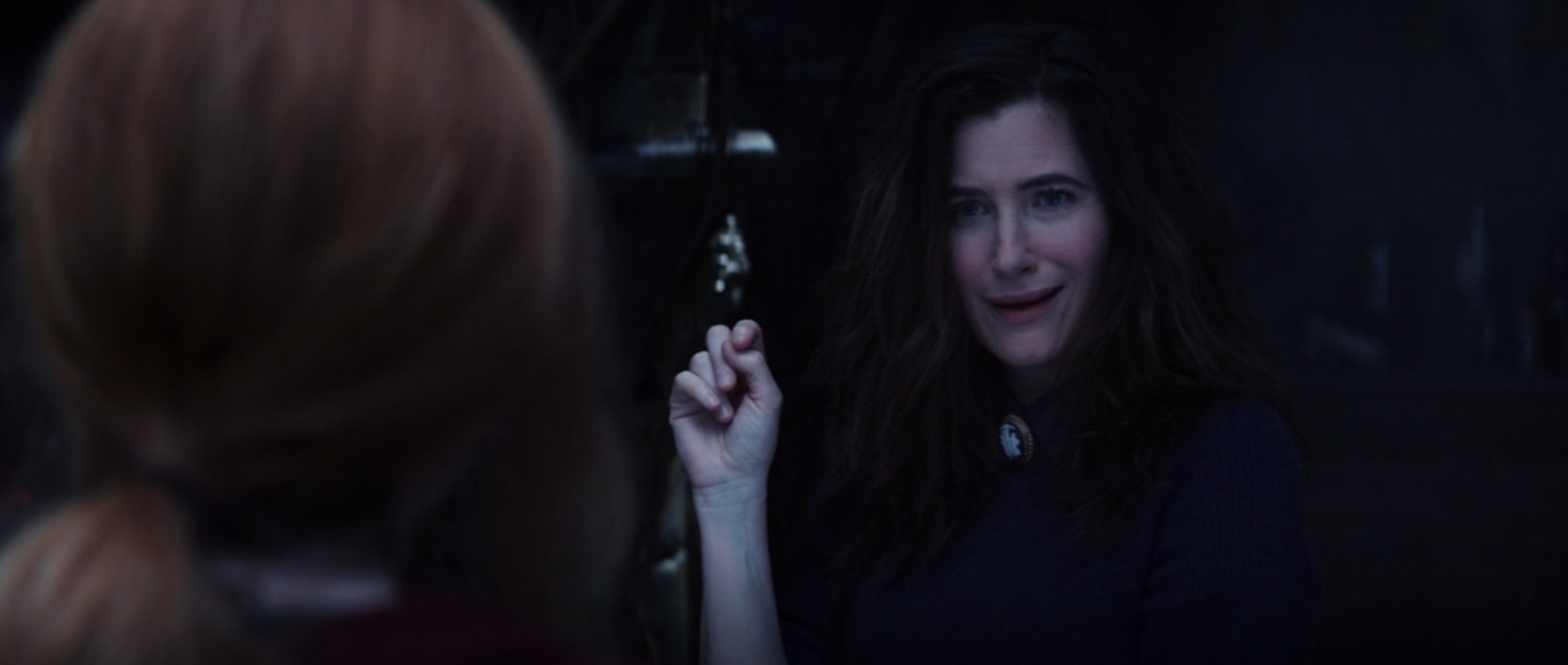How 'WandaVision' used the Salem Witch Trials' long pop culture history to its advantage
The trials have long been utilized to haunt pop culture witches.

This post contains spoilers for WandaVision.
Check out our last review here.
The exposition-heavy penultimate episode begins in this familiar location but takes a different direction in its depiction of the infamous witch trials that stained the New England soil. Comic book readers will no doubt be aware that Agatha Harkness was instrumental during this period, but rather than saving her fellow sisters, she used the hysteria to dispense the weaker witches in their midst. Already subverting the Salem Witch Trial tropes, the Agatha in the source material contemplates genocide before someone changes her mind. Nevertheless, she is still burned at the stake — though contrary to popular belief, no one was executed in this manner in reality. Luckily for WandaVision’s Agatha Harkness (Kathryn Hahn), there is no such fiery death. Instead, her misdemeanor against her coven was stealing knowledge, not implicating witches. This would come up for Agatha in her comic book story, but it's long after the trials.
A title card reading “Salem, Massachusetts 1693” translates into more than time and place particularly in a series with not one but two powerful witches serving up spells. In the start of “Previously On,” Agatha appears to be telling the truth when she pleads with her coven and this is a subversion of both the source material and the Salem location. Her screams of pain are real and there is genuine surprise cast across Agatha’s tear-stained face when the beams turn from blue to purple. The brooch that works with any outfit is revealed to come from the woman Agatha calls mother. Similar to the Chilling Adventures of Sabrina coven, the three-in-one witch goddess Hecate — aka the Maiden, Mother, and Crone — is portrayed in this piece of jewelry. If she was versed in the fundamentals then Wanda (Elizabeth Olsen) might have clocked this brooch or the runes in Agatha’s bewitching basement. (A basement of the home that is the same as the Stephens residence in Bewitched) “Previously On” turns the clock back, first to the 17th century to highlight Agatha’s age and experience, and then through pivotal moments in Wanda’s life to explain how she made her sitcom refuge into Westview.

Pop culture has long used Salem for a variety of reasons — some witchy, some not — and the appearance of this location to explain where Agatha comes from is not a surprise. The WandaVision writers have changed her role and avoided using the Salem Seven in the streamlining of this narrative, and is it too early to ask for an Agatha spin-off? Perhaps if Wanda’s favorite show was Bewitched and not The Dick Van Dyke Show she would have a better grip on the witchy fundamentals. Salem is storytelling shorthand for persecution (even if the term “witch hunt” has lost all meaning thanks to its recent political misuse) and this brief foray into Agatha’s past highlights why storytellers often use this setting during a witch’s origin story. Salem was far from the first place to experience this level of witch hunt hysteria, nor is it the only form of witch trials portrayed in pop culture, but the events at this location are ingrained in our collective minds. If Wanda did want to brush up on her Salem knowledge here is a brief history of its role on screen.

McCarthyism and Political Allegory
Perhaps the most famous depiction of the Salem Witch Trials, Arthur Miller’s seminal 1953 play The Crucible is a Puritanical drama with feet firmly planted in the Cold War. Adapted for the screen first in 1957 (with a screenplay by French philosopher Jean-Paul Sartre) and again in 1996 starring Daniel Day-Lewis as John Proctor. Miller adapted his own play more than 40 years after it was first performed and was nominated for an Oscar. A favored text for high school students, the allegorical links between 1690s Massachusetts and Senator Joe McCarthy’s hunt for Communists in Hollywood is stark. Miller was later questioned (and held in contempt for refusing to name names) by the House of Representatives Committee on Un-American Activities (HUAC) in 1956. While no one was sentenced to death, this feverish undertaking ruined many lives and the Hollywood blacklist grew to 151 people whose reputations were tarnished. Helen and Alfred Lewis Levitt were on this list and the pair wrote an episode of Bewitched in 1967 under a pseudonym (Helen and Tom August). Sitcoms were a refuge to them as writers, but this particular episode is notable as it features a witch trial — in rare timeline shift, this is set more than 70 years before Salem. The link between their experience and the events in “Samantha’s Thanksgiving to Remember” reveals that even the happy world of sitcoms can reflect the worst of humanity through allegory. If only Wanda had watched this episode.
Pointing fingers to protect oneself is pretty common under these circumstances (both in the 1950s and 1690s) but Agatha is not the only witch to willfully partake in the hysteria building. Running for three seasons, WGN’s Salem also followed this pattern of a powerful witch using this moment to her benefit (in this case she wants to summon the devil).
Origin Story

By far the most common example of how Salem fits into pop culture is to showcase how old a witch is or that all ancestral roads lead back to New England. In the Veronica Lake starring 1942 rom-com, I Married A Witch, Lake’s Jennifer was burned at the stake and her return is part of a revenge curse on the family line who sentenced her to this fate. Much like the sitcoms Wanda favors, shenanigans ensue. More recently, American Horror Story: Coven, The Vampire Diaries, and Charmed have all explained how characters gained power with a link back to descendents of this infamous town.
The latest updates, reviews and unmissable series to watch and more!
Crime procedurals have also hopped on this New England train with Bones exploring methods of torture from the 17th century inflicted on a person in the present with ties to witchcraft. Meanwhile, in the Criminal Minds “In the Blood,” a serial killer (or unsub) obsessed with Salem has turned to history for inspiration (because, of course).
Sabrina Spellman has an iconic (and sometimes talking) cat named after this town, but this is not the only connection. Chilling Adventures delved into the dark and bloody history while also nodding to the trials with characters named after key players (Ms. Wardwell and Theo Putnam). The Melissa Joan Hart-fronted series went more literal with a school trip to Salem that leads to a day of adolescents playing townsfolk and accusing each other of witchcraft. Puritanical attire makes this experience all-too-real for the teen witch in an episode named after Miller’s play.
Time Travel

Long historical roots are not the only link to the past and this location has been subject to several notable TV time travelers including the Legends of Tomorrow heroes and those trying to keep history as it was in Timeless. One issue that often arises is contemporary language puts these outsiders under the spotlight and it is easy to fall under the cloud of suspicion. When Darrin (Dick York) lights a match (which were not invented) in the aforementioned Thanksgiving episode, he is accused of witchcraft and he falls under suspicion again in Season 7 when Samantha is accidentally sent back to Salem. It doesn’t help that the actual witch can’t remember who she is (or the powers she possesses). Again, if only Wanda had been paying attention to this later season arc (maybe she wasn’t so fond of new Darrin).
The stakes (no pun intended) are high in Timeless as not only does Lucy (Abigail Spencer) get accused of witchcraft by her own mother — family members would often point the finger at someone in their home but this is more calculated — but they also have to save Benjamin Franklin’s mother from the hangman’s noose. No matter the genre, Salem’s history is an effective shorthand for the falsely accused and the power of fear as a weapon. Whether you have read the Agatha Harkness source material or not, the opening scene of “Previously On” is effective. The choice of accusers flips the script, but it is still familiar because of how often this location is depicted. And it wouldn’t be a witchy origin story without Salem, Massachusetts.
MORE: After WandaVision wraps up, schedule time to watch every Marvel movie in order
ALSO: How to watch Disney+ on Apple TV
Emma Fraser spends most of her time writing about TV, fashion, and costume design; Dana Scully is the reason she loves a pantsuit. Words can also be found at Vulture, Elle, Primetimer, Collider, Little White Lies, Observer, and Girls on Tops. Emma has a Master’s in Film and Television, started a (defunct) blog that mainly focused on Mad Men in 2010, and has been getting paid to write about TV since 2015. It goes back way further as she got her big start making observations in her diary about My So-Called Life’s Angela Chase (and her style) at 14.


